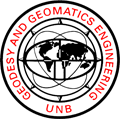About GEG · GEG Projects · GEG Publications & Presentations
Good Governance of Canada's Oceans
The Geographical Engineering Group
The Geographical Engineering Group provides research services and computing facilities to clients within both industry and government across Canada and beyond. It draws on the expertise of faculty members and related research groups specializing in geographic information systems (GIS), remote sensing, ocean mapping, land administration, land information management research, and geographic information standards.
Laboratory facilities include a number of Sun UNIX workstations, a MicroVax minicomputer and Macintosh and PC-compatible microcomputers. Graphic output devices in the Laboratory include laser printers, a drum plotter, colour ink-jet printers and a large-format Versatec colour electrostatic plotter. In addition to a wide range of specialized application development tool, specialized software currently in place includes the CARIS GIS software from Universal Systems, PCI's EASI-PACE software for remote sensing image analysis, IDRISI GIS software for teaching, Intergraph MGE software, and both ArcView2 and MapInfo for desktop mapping applications. State-of-the-art photogrammetric mapping equipment includes both a PC-based Digital Video Plotter (DVP) and a UNIX-based Digital Photogrammetric Workstation, both from Leica.
At any one time, 15-20 postgraduate students will draw on the facilities of the Laboratory. Current technical research projects deal with data structuring and interchange standards, optimizing GIS data retrieval capabilities, GIS performance determination across broadband communication networks, spatial data quality control, GIS/remote sensing integration and user access concerns within a spatial data infrastructure. Management research projects deal with improvement of land registration services in both established programs and developing countries, GIS user requirements determination, and identification of policy issues within national and global spatial data infrastructure.
Spatial Data Infrastructure: Setting the Stage
Over the last three decades, governments and industry in North America have invested hundreds of billions of dollars in the development of computer-based land information systems. While the data within may cover an entire city, county, state, province or country, these systems have been designed largely to serve specific applications such as forestry, land records management, utility facilities management or municipal engineering, among others.During the next decade, the focus will increasingly shift to the challenges and opportunities associated with integrating these systems into a national - and eventually a global - spatial data infrastructure. Spatial data infrastructure encompasses the data sources, systems, linkages, processes, standards and institutional arrangements involved in delivering spatially-related information (both commercial and publicly-held) to the widest possible group of potential users. This will entail the linking together of environmental, social-economic and institutional databases and provide for the movement of information from the local to the national and, eventually, to the global community.
The vision of a national spatial data infrastructure is already receiving considerable attention in the United States, where the National Research Council recently released a major report on this goal. The creation of such infrastructures in different countries will involve cooperative efforts and investigations by many different organizations to address both technological and institutional issues. Important research in the areas of standards definition, networking and human-computer interaction is already taking place in government departments, systems vendors and telecommunications firms, among others. However, there are still many issues to be resolved in the implementation of a spatial data infrastructure.
Spatial Data Infrastructure: Research Challenges
Most of the current geomatics research projects are either applications-driven or product-driven. While these efforts make important contributions to the field, there remains a need to link both the technology and the applications to advances in wide-area data communications and networking now rapidly taking place. With the current government and corporate interest in electronic highway initiatives, there needs to be a national focal point for research into spatial data infrastructure as a phenomenon in itself.To this end, the group has launched an ongoing research program with the following objectives:
- to design and test alternative models, approaches, techniques and tools required to operate within a spatial data infrastructure
- to investigate how improvements in geomatics technology and communications services are influencing workgroup attitudes, business practices and institutional policies
- to work with industrial partners to develop tools and techniques demonstrating the collective application of spatial data infrastructure components to practical problems and applications in environmental and municipal planning, land records administration, resource inventory and coastal zone management
The group continued to be actively involved with land privatization and land registration projects in Russia and Ukraine. Sue Nichols continued as a monitor for Foreign Affairs Canada in Russia and as a member of the advisory board for the Canadian project in Ukraine. She gave a series of lectures in Ukraine in the fall. The main thrust of this area of research is to test theoretical work on land registration and land administration in a rapidly evolving set of legal, administrative, and economic arrangements.
In addition, the group has been supporting continuing education initiatives in Eastern Europe to assist land reform. Sue Nichols gave a series of lectures in Ukraine, and future co-operation with L'viv Polytichnic is being explored. In December, 20 delegates representing the Russian Land Resource Committee visited the Department to evaluate the capability of UNB to support training in land administration.
Work also continued on more specific aspects of land administration, including the development of systems to integrate traditional land records and environmental regulations, the design of a "proprietary cadastre" for individual property management, and issues related to guaranteed boundaries and interjurisdictional boundaries. Michael Sutherland also completed his research on the design of a re-engineering strategy for land administration in Jamaica.


